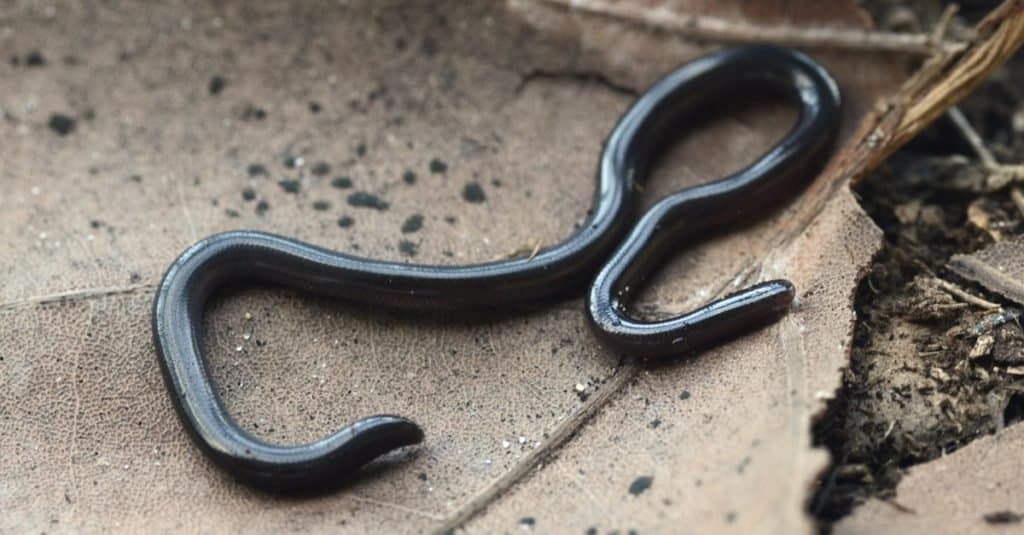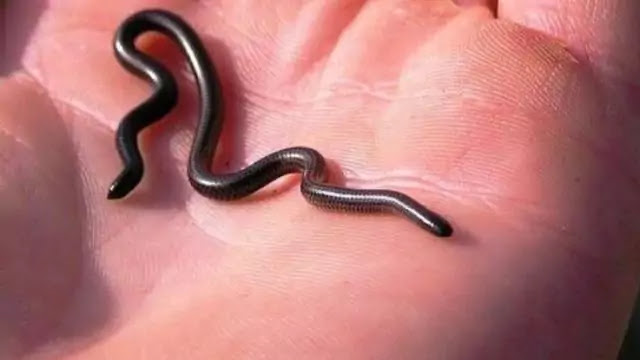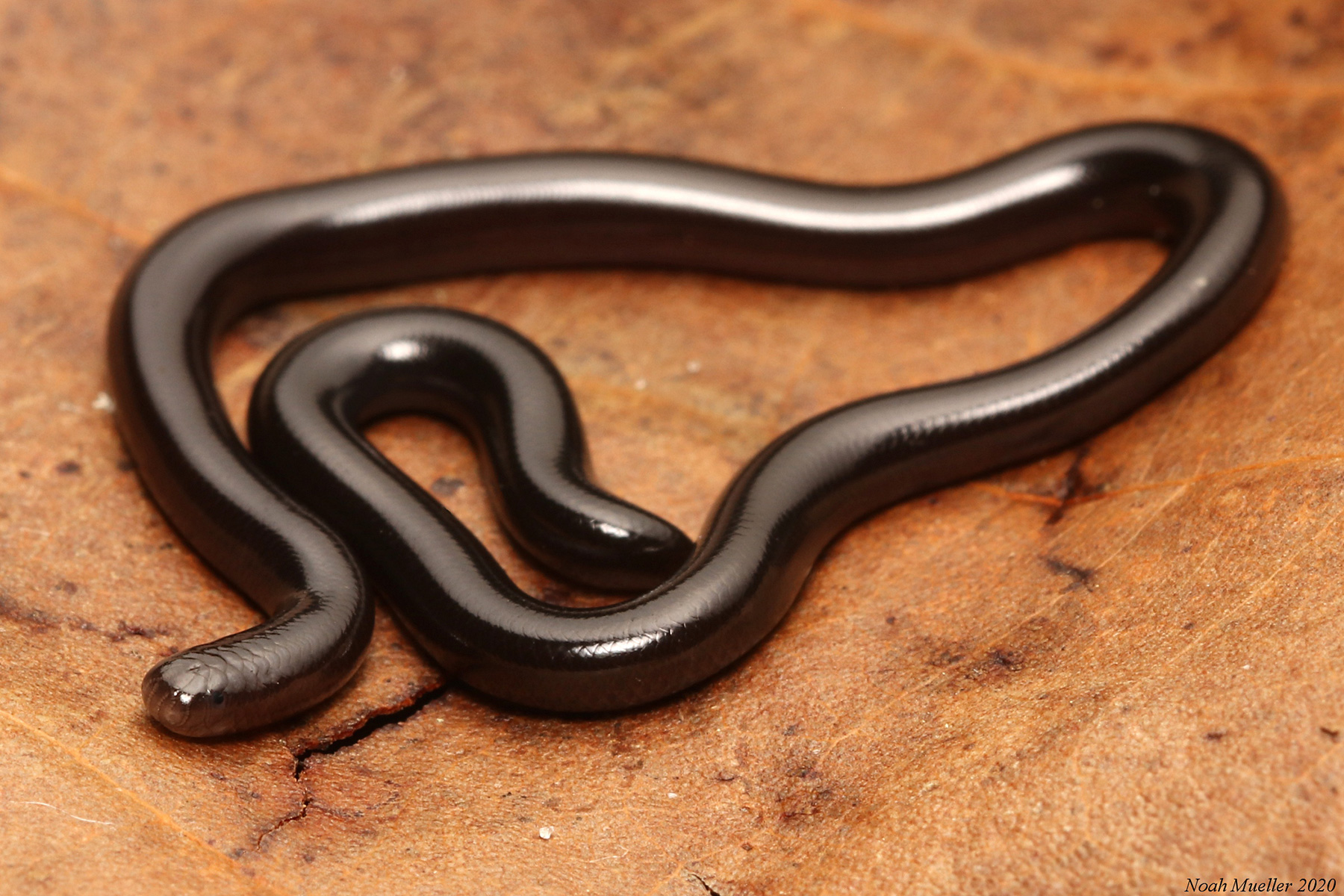Snakes are fascinating creatures that come in all shapes and sizes. While some species can grow to be several feet long, others are so small that they can easily be mistaken for earthworms. In this article, we will be exploring the top 10 smallest snakes in the world.
From the Barbados Thread Snake, which is considered the smallest snake in the world, to the Worm Snake, which measures just 10 to 15 inches in length, we will take a closer look at these tiny reptiles and learn more about their unique characteristics.
You are reading: Top 10 Smallest Snakes In The World
Whether you are a snake enthusiast or simply curious about these fascinating creatures, this article is sure to provide you with some interesting insights into the world of small snakes.

Top 10 Smallest Snakes In The World
Barbados Thread Snake

The Barbados Thread Snake (Tetracheilostoma carlae) is the smallest known snake species in the world, reaching a maximum adult length of only 10.4 cm (4.1 inches) and an average weight of 0.6 g (0.02 ounce) . This tiny burrowing snake is found on the Caribbean islands of Barbados and Anguilla.
The snake was first identified as a separate species in 2008 by S. Blair Hedges, a herpetologist from Pennsylvania State University, who named the new species of snake in honor of his wife, Carla Ann Hass, a herpetologist who was part of the discovery team. The Barbados
Thread Snake is a carnivore and feeds mostly on termite or ant larvae. Female members of the species are egg layers that produce a single large elongated egg, and hatchlings are approximately one-half the size of a full-sized adult.
Brahminy Blind Snake

The Brahminy Blind Snake (Indotyphlops braminus) is a non-venomous, burrowing snake species that is commonly found in Africa and Asia, but has been introduced to many other parts of the world through the plant trade.
These tiny snakes are completely fossorial, with habits and appearance similar to earthworms, for which they are often mistaken. They are one of the smallest snakes in the world, with adults measuring only 2.5 to 7 inches in length. The head and tail of the Brahminy Blind Snake are superficially similar, as the head and neck are indistinct, and the eyes are reduced to small patches of dark pigment beneath the scales. The neck is indistinct, and the tail is tipped with a tiny pointed spur.
These snakes are harmless and cannot bite, but when threatened, they will produce a smelly musk, squirm vigorously, or poke with the tail spine to cause an unpleasant pricking sensation. Brahminy Blind Snakes are carnivores and feed on larvae, eggs, and pupae of termites and ants.
Variegated Snail-eater
The Variegated Snail-eater (Dipsas variegata) is a non-venomous snake species found in South America. As its name suggests, this snake feeds almost exclusively on tree snails and slugs.
The Variegated Snail-eater is harmless to humans and is extremely docile, never attempting to bite. The snake is also known as Cobra-Cipó, Come-Lesma, Dorme-Dorme, Dormideira, Dorminhoca, and Jararaquinha-Dormideira in Portuguese.
The scientific classification of the Variegated Snail-eater is as follows: Kingdom: Animalia, Phylum: Chordata, Class: Reptilia, Order: Squamata, Suborder: Serpentes, Family: Colubridae, Genus: Dipsas, Species: D. variegata.
Flat-headed Snake
Read more : 4 Types Of Fish Scales And Why Fish Need Them
The Flat-headed Snake (Tantilla gracilis) is a species of snake belonging to the family Colubridae. It is the smallest snake in Missouri and Kansas, with an average length of 7 to 8 inches.
The snake has a pointed head and smooth scales, with a plain tan or yellow-brown body and a darker head. The belly of the Flat-headed Snake is bright salmon or orange in the middle, becoming white toward the edges.
The snake is found in the US states of Missouri, Texas, Kansas, Illinois, Oklahoma, Louisiana, and Arkansas, as well as in Mexico. The Flat-headed Snake is harmless to humans and feeds on small invertebrates such as insects and spiders.
Ringneck Snake
The Ringneck Snake (Diadophis punctatus) is a species of colubrid snake found throughout much of the United States, central Mexico, and southeastern Canada.
Here are some interesting facts about the Ringneck Snake:
– Ringneck Snakes are small, slender snakes that are generally grayish with a yellow or orange band around the back.
– They are nocturnal and secretive, so they are rarely seen during the day time.
– Ringneck Snakes are best known for their unique defense posture of curling up their tails, exposing their bright red-orange posterior, ventral surface when threatened.
– They are believed to be fairly abundant throughout most of their range, though no scientific evaluation supports this hypothesis.
– Ringneck Snakes are harmless to humans and feed on a variety of prey, including earthworms, salamanders, and small lizards.
– They may paralyze prey using toxins in their saliva that is not harmful to humans.
– Ringneck Snakes are often forest dwellers, usually living within rotting logs or in leaf litter.
– They can frequently be found in flowerbeds.
– Ringneck Snakes lay 2-7 eggs during the early summer.
Ringneck Snakes are fascinating creatures that play an important role in their ecosystems. They are also known for their gentle nature and unique defense mechanisms, making them a favorite among snake enthusiasts.
Short-Headed Garter Snake
The Short-Headed Garter Snake (Thamnophis brachystoma) is a small species of colubrid snake that is endemic to the northeastern United States.
Here are some interesting facts about the Short-Headed Garter Snake:
Physical Characteristics:
– The Short-Headed Garter Snake is a small to medium-sized snake with a short head that is not distinct from the body.
– It has side stripes located on the 2nd and 3rd rows of scales from the belly.
– The snake is one of the smallest garter snake species, measuring only about 10 to 15 inches in length.
Habitat and Behavior:
– The Short-Headed Garter Snake is commonly found in old fields and meadows, but can occasionally be found in wooded areas.
– It is almost always found within several hundred meters of a field.
– On sunny days, it will be openly basking, but when a population study was conducted, it was almost invariably found under objects such as wood and rocks.
– Individuals were only encountered in the open on cloudy days.
– The snake is slow to bite would-be handlers, but will readily release a foul-smelling musk.
Conservation Status:
– The Short-Headed Garter Snake is listed as “apparently secure” by NatureServe.
– It is not considered to be a threatened species.
The Short-Headed Garter Snake is a fascinating species that plays an important role in its ecosystem. While it may not be as well-known as some other snake species, it is an important part of the natural world and is worth learning more about.
Western Ground Snake
The Western Ground Snake (Sonora semiannulata) is a small, non-venomous colubrid snake that is native to North America.
Here are some interesting facts about the Western Ground Snake:
Physical Characteristics:
– The Western Ground Snake can grow to a total length (including tail) of 8 to 19 inches (20.3 to 48.3 cm).
– The color and pattern of the snake can vary widely, with individuals being brown, red, or orange, with black banding, orange or brown striping, or solid-colored.
– The underside of the snake is typically white or gray.
– The Western Ground Snake has smooth dorsal scales, a small head, and round pupils.
Habitat and Behavior:
– The preferred habitat of the Western Ground Snake is dry, rocky areas with loose soil.
– The snake is often found in grasslands, chaparral, and desert scrub.
– Western Ground Snakes are active during the day and are often found basking in the sun.
– They are known to burrow in loose soil or under rocks.
– Western Ground Snakes are not aggressive and are generally harmless to humans.
– When threatened, they may vibrate their tails or release a foul-smelling musk.
Conservation Status:
– The Western Ground Snake is not considered to be a threatened species.
The Western Ground Snake is a fascinating species that plays an important role in its ecosystem. While it may not be as well-known as some other snake species, it is an important part of the natural world and is worth learning more about.
Texas Blind Snake
The Texas Blind Snake (Leptotyphlops dulcis) is a species of snake in the family Leptotyphlopidae.
Here are some interesting facts about the Texas Blind Snake:
Physical Characteristics:
– The Texas Blind Snake is a small, slender snake that can grow up to 8 to 10 inches in length.
– It has smooth, shiny scales that are brown or gray in color.
– The snake has a small head and eyes that are covered by a transparent scale.
– The Texas Blind Snake has a pointed tail that it uses to burrow into the soil.
Habitat and Behavior:
– The Texas Blind Snake is found in arid grasslands and desert fringes, as long as moisture and surface cover, such as rocks and logs, are available.
– It is active on the soil surface at night or early evening, feeding on larvae and pupae of insects, termites, and earthworms.
– The snake is rarely observed on the surface during the day unless the ground is very wet or flooded.
– Texas Blind Snakes are beneficial to the environment because of their feeding habits.
– They are not venomous and are harmless to humans.
Conservation Status:
– The Texas Blind Snake is not considered to be a threatened species.
Read more : Top 9 Animals That Burrow Underground
The Texas Blind Snake is a fascinating species that plays an important role in its ecosystem. While it may not be as well-known as some other snake species, it is an important part of the natural world and is worth learning more about.
Sharp-tailed Snake
The Sharp-tailed Snake (Contia tenuis) is a small species of snake in the family Colubridae.
Here are some interesting facts about the Sharp-tailed Snake:
Physical Characteristics:
– The Sharp-tailed Snake has an average total length (including tail) of 12–18 inches (30–46 cm) as an adult.
– It is distinguished by its sharp tail spine, which is the protruding tip of the last tail vertebra.
– The dorsal surface ranges in color from grayish brown to brown to brick red, with bubble-gum pink and peachy-orange specimens occasionally found.
Habitat and Behavior:
– Sharp-tailed Snakes occur in a variety of habitats, however, they are most commonly found in moist environments with an abundance of surface debris.
– They tend to be found most often on sunny days during the rainy season resting under objects in open areas such as boards, rocks, wood debris.
– The Sharp-tailed Snake is a shy, secretive creature most often encountered under rocks and logs, and rarely to never found in the open.
– They are able to persist in suburban and urban areas, as long as there is suitable habitat.
– Sharp-tailed Snakes are not aggressive and are generally harmless to humans.
Conservation Status:
– The conservation status of the Sharp-tailed Snake in the U.S. is Least Concern.
– However, in British Columbia, they are categorized as Endangered due to habitat loss there.
– Under Canada’s Species at Risk Act, the Sharp-tailed Snake is listed as Endangered on Schedule 1, the official list of wildlife species at risk.
The Sharp-tailed Snake is a fascinating species that plays an important role in its ecosystem. While it may not be as well-known as some other snake species, it is an important part of the natural world and is worth learning more about.
Worm Snake
The Worm Snake (Carphophis amoenus) is a small, nonvenomous colubrid snake species that is endemic to the eastern United States.
Here are some interesting facts about the Worm Snake:
Physical Characteristics:
– The Worm Snake is a small snake, with an average length of 13 inches (33.5 cm).
– It has smooth, shiny scales that are brown or gray in color.
– The snake has a pointed tail that it uses to burrow into the soil.
– The Worm Snake is often mistaken for an earthworm due to its small size and slender body.
Habitat and Behavior:
– The Worm Snake prefers a moist habitat in the rocky woodlands, under rotten wood of logs and stumps.
– This species prefers moist soil inhabited by earthworms, which are its main prey, so the soil needs to be sufficiently moist.
– The snake’s skin naturally evaporates water; so the soil needs to be moist enough to offset this.
– Worm Snakes are mostly found under rocks and in sufficient leaf litter during the extreme daytime heat.
– They are active during the day and are rarely seen at night.
– Worm Snakes are not aggressive and are generally harmless to humans.
Conservation Status:
– The conservation status of the Worm Snake is Least Concern.
The Worm Snake is a fascinating species that plays an important role in its ecosystem. While it may not be as well-known as some other snake species, it is an important part of the natural world and is worth learning more about.
FAQS
1. What is the smallest snake in the world?
The Barbados Thread Snake is considered the smallest snake in the world, with an adult length of about 3.94 inches to 4.09 inches.
2. What is the largest snake in the world?
The largest snake in the world is the Green Anaconda, which can grow up to 29 feet long and weigh over 500 pounds.
3. Are all small snakes harmless?
No, not all small snakes are harmless. Some small snakes, such as the Ringneck Snake, are venomous, but their venom is only strong enough to subdue their prey.
4. What do small snakes eat?
Small snakes eat a variety of prey, including insects, earthworms, slugs, and small vertebrates such as lizards and frogs.
5. Where do small snakes live?
Small snakes can be found in a variety of habitats, including forests, grasslands, deserts, and wetlands.
6. Are small snakes endangered?
Some small snake species are endangered due to habitat loss and other factors, but many are not considered to be threatened.
7. Can small snakes be kept as pets?
Yes, some small snake species can be kept as pets, but it is important to research the specific needs of the species before getting one as a pet.
8. Are small snakes important to the ecosystem?
Yes, small snakes play an important role in their ecosystems as predators and prey, and they help to control populations of insects and other small animals.
Source: https://petstutorial.com
Category: Animals










